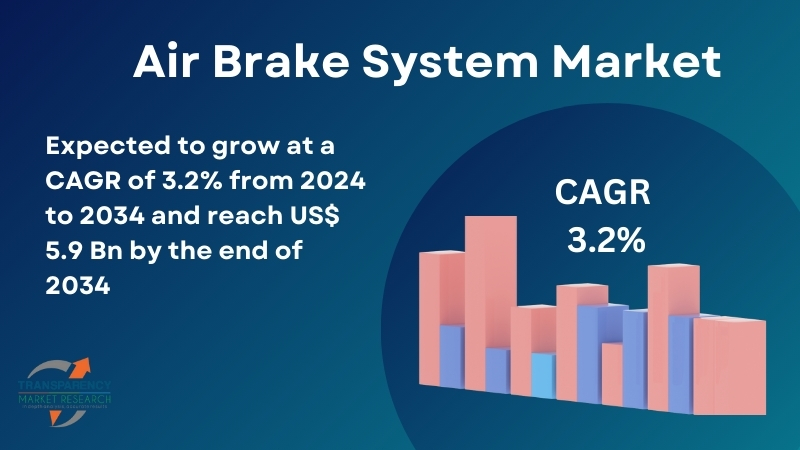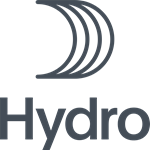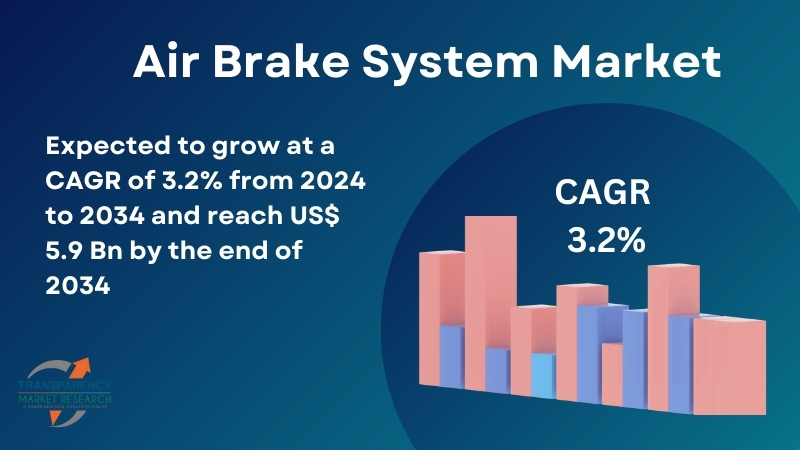Beer Institute Releases August 2024 Domestic Tax Paid Estimate
WASHINGTON, Oct. 08, 2024 (GLOBE NEWSWIRE) — Today, the Beer Institute published an unofficial estimate of domestic tax paid shipments by beer brewers for August 2024:
The August 2024 estimate is 13,000,000 barrels, a decrease of 7.7% compared to August 2023 removals of 14,080,189.
| Domestic Tax Paid – TTB | ||||
| (31 Gallon Barrels) | ||||
| Month | 2023 | 2024 | Percent Change | Volume Change |
| January | 11,199,785 | 11,500,242 | 2.7% | 300,457 |
| February | 11,034,980 | 12,092,051 | 9.6% | 1,057,071 |
| March | 14,709,143 | 12,340,245 | -16.1% | -2,368,898 |
| April | 12,850,800 | 12,429,880 | -3.3% | -420,920 |
| May | 12,760,843 | 13,492,470 | 5.7% | 731,627 |
| June | 15,134,224 | 14,059,843 | -7.1% | -1,074,381 |
| July | 13,257,969 | 12,800,000 | -3.5% | -457,969 |
| August | 14,080,189 | 13,000,000 | -7.7% | -1,080,189 |
| YTD | 105,027,933 | 101,714,731 | -3.2% | -3,313,202 |
The September 2024 domestic tax paid estimate is scheduled to be released on November 5, 2024.
###
The Beer Institute is a national trade association for the American brewing industry, representing brewers, beer importers and industry suppliers—an industry that supports nearly 2.4 million jobs and provides more than $409 billion to the American economy. First founded in 1862 as the U.S. Brewers Association, the Beer Institute is committed today to developing sound public policy and to the values of civic duty and personal responsibility. For additional updates from the Beer Institute, visit our website and follow us on Facebook, X, LinkedIn and Instagram.

Jeff Guittard Beer Institute 2027372337 jguittard@beerinstitute.org
Market News and Data brought to you by Benzinga APIs
© 2024 Benzinga.com. Benzinga does not provide investment advice. All rights reserved.
Norsk Hydro: Status share buyback program
Norsk Hydro: Status share buyback program
Please see below information about transactions made under the share buyback program for Norsk Hydro ASA.
Announcement date of the share buyback program: September 11, 2024
End date of the share buyback program: February 28, 2025
Overview of transactions:
| Date | Aggregated daily volume (number of Shares) | Weighted average share price per day (NOK) | Total daily transaction value (NOK) |
| 02/10/2024 | 172 000 | 68.81 | 11 834 598 |
| 03/10/2024 | 250 000 | 67.53 | 16 881 300 |
| 04/10/2024 | 225 000 | 68.26 | 15 357 375 |
| 07/10/2024 | 150 000 | 68.63 | 10 294 395 |
| 08/10/2024 | 300 000 | 66.30 | 19 891 050 |
| Previous Transactions | 2 740 956 | ||
| Accumulated to date | 3 837 956 | 64.01 | 245 658 243 |
Prior to the share buyback program Norsk Hydro ASA owned a total of 14 082 505 own shares. Following the above listed transactions, Norsk Hydro ASA owns a total of 17 920 461 shares, corresponding to 0.89% of Norsk Hydro ASA’s share capital.
Attachment: An overview of all the completed transactions under the program for the dates specified above is attached to this notification and available on www.newsweb.no.
Investor contact:
Martine Rambøl Hagen
Head of Investor Relations
+47 91708918
Martine.Rambol.Hagen@hydro.com
This is information that Norsk Hydro ASA is obliged to make public pursuant to the EU Market Abuse Regulation and subject to the disclosure requirements pursuant to Section 5-12 of the Norwegian Securities Trading Act.

Market News and Data brought to you by Benzinga APIs
© 2024 Benzinga.com. Benzinga does not provide investment advice. All rights reserved.
Compass to Announce Third Quarter 2024 Earnings on Wednesday, October 30
NEW YORK, Oct. 8, 2024 /PRNewswire/ — Compass, Inc. COMP, the largest residential real estate brokerage in the United States by sales volume1, announces its third quarter 2024 financial results will be released after market close on Wednesday, October 30, 2024. The company will host a conference call and webcast to discuss its results that afternoon at 5:00 p.m. ET / 2:00 p.m. PT.
Call details are as follows:
- The conference call will be accessible online via the Compass Investor Relations website, https://investors.compass.com.
- You can also register in advance to access the live conference call and shareholder presentation at: Compass Inc. 3Q24 Earnings Conference Call.
- An audio recording of the conference call will be available for replay shortly after its completion for 90 days following the call. To access the replay and shareholder presentation, visit the Events and Presentations section of the Compass Investor Relations website.
About Compass
Compass is the largest residential real estate brokerage in the United States by sales volume. Founded in 2012 and based in New York City, Compass provides an end-to-end platform that empowers its residential real estate agents to deliver exceptional service to seller and buyer clients. The platform includes an integrated suite of cloud-based software for customer relationship management, marketing, client service, brokerage services, and other critical functionality, all custom-built for the real estate industry. Compass agents utilize the platform to grow their business, save time, and manage their businesses more effectively. For more information on how Compass empowers real estate agents, one of the country’s largest groups of small business owners, please visit www.compass.com.
Compass uses its Investor Relations website, https://investors.compass.com, to disclose information that may be of interest or material to its investors and to comply with disclosure obligations under Regulation FD. Accordingly, investors should monitor Compass’ Investor Relations website and follow Compass’ press releases, SEC filings, public conference calls, webcasts, and social media.
1 T. Velt, “eXp, Compass top 2024 RealTrends Verified brokerage rankings for the third year,” Online, HW Media, 3/22/24, https://www.housingwire.com/articles/exp-compass-top-2024-realtrends-verified-brokerage-rankings-again/
![]() View original content to download multimedia:https://www.prnewswire.com/news-releases/compass-to-announce-third-quarter-2024-earnings-on-wednesday-october-30-302270635.html
View original content to download multimedia:https://www.prnewswire.com/news-releases/compass-to-announce-third-quarter-2024-earnings-on-wednesday-october-30-302270635.html
SOURCE COMPASS
Market News and Data brought to you by Benzinga APIs
© 2024 Benzinga.com. Benzinga does not provide investment advice. All rights reserved.
S&P 500 Earnings Season Kicks Off: Why Analysts Call This Quarter 'A Stock Picker's Paradise'
As the third-quarter earnings season for the S&P 500 begins, investors are bracing for a wave of corporate results that will offer a window into how well companies are behaving in a complex economic and geopolitical environment.
Bank of America analysts Ohsung Kwon, and Savita Subramanian suggest that, while expectations for earnings growth are relatively subdued, there could still be significant opportunities for stock pickers.
Stock Picker’s Paradise: Volatility Ahead
One of the most notable takeaways from the latest Bank of America earnings preview is the potential for significant volatility at the single-stock level.
The options market has been pricing in the largest average post-earnings implied moves for individual stocks since 2021, suggesting that certain companies could see outsized price swings following their earnings releases.
On the other hand, “implied volatility on the S&P 500 at the index level remains relatively low, which suggests the real action is going to be at the single stock level rather than at the index level this earnings season. It could be a stock picker’s paradise,” analysts wrote.
Earnings Growth Expected To Slow
The consensus among analysts is that S&P 500 earnings will grow by 4% year-over-year in the third quarter, marking a sharp deceleration from the 11% annual growth reported in the second quarter. This slowdown would represent the largest since the first quarter of 2022.
Bank of America analysts highlight that the “bar isn’t high” for companies this quarter.
With lower expectations baked into earnings forecasts, companies that have successfully navigated challenges like higher interest rates, energy costs, and global supply chain disruptions could see their stocks rewarded, particularly in rate-sensitive sectors.
Sector-by-Sector Breakdown: Where To Look For Strength Or Weakness
While the overall earnings growth for the S&P 500 is expected to be modest, sector performance will vary significantly:
| Sector | Earnings (YoY%) | Earnings (QoQ%) | Sales (YoY%) | Sales (QoQ%) |
|---|---|---|---|---|
| Consumer Discretionary | -1.7% | 1.3% | 4.9% | 1.4% |
| Consumer Staples | 0.7% | 0.9% | 1.7% | 4.2% |
| Energy | -20.7% | -2.4% | -2.4% | 0.0% |
| Financials | -0.3% | -9.2% | 3.1% | -22% |
| Health Care | 10.0% | 0.8% | 7.1% | 0.7% |
| Industrials | 1.9% | -5.7% | 2.5% | 0.0% |
| Technology | 15.1% | 6.4% | 11.8% | 4.2% |
| Materials | -4.8% | -16.1% | 4.9% | 3.6% |
| Real Estate | 6.1% | -0.8% | 4.7% | -0.4% |
| Communication Services | 11.3% | 61.8% | 6.9% | 3.0% |
| Utilities | 3.5% | 32.5% | 6.9% | 18.9% |
| S&P 500 | 4.0% | 5.5% | 4.7% | 1.8% |
Early Results Show Mixed Performance, Focus Shifts From Mag7 To S&P 493
So far, 21 companies, primarily those with August quarter-ends, have reported their third-quarter results: 76% have beaten earnings expectations, 67% exceeded sales estimates, and 62% surpassed both, slightly better than historical averages.
However, the median earnings beat has been just 3.5%, compared to the historical average of 5.4%, suggesting that while companies are surpassing expectations, the magnitude of those beats has been smaller.
Bank of America forecasts that the S&P 500’s mega-cap tech companies (often referred to as the Magnificent Seven) are seeing earnings growth decelerate for the second consecutive quarter.
Earnings for these companies are projected to grow by 37% in the third quarter, down from an even stronger pace seen earlier this year.
Among this elite group of stocks, Tesla Inc. TSLA will be the first to report on Oct. 16, followed by Alphabet Inc. GOOGL and Microsoft Corp. MSFT on Oct. 22, Meta Platforms Inc. META on Oct. 23, Apple Inc. AAPL and Amazon.com Inc. AMZN on Oct. 24. The AI-darling Nvidia Corp. NVDA will unveil quarterly result on Nov. 19.
Meanwhile, the other 493 companies in the S&P 500 have recently emerged from an earnings recession, posting 8% year-on-year growth in the second quarter. Both groups are expected to see further deceleration in the third quarter.
Looking ahead, Bank of America forecasts that earnings growth will pick up in the fourth quarter, especially for the 493 non-mega-cap companies. Analysts expect double-digit earnings growth for these companies, driven by rate-sensitive sectors like manufacturing and housing, which have been hurt by the Federal Reserve’s aggressive rate hikes in recent years.
Political Uncertainty: The Election Effect
Political uncertainty is also expected to play a critical role in the upcoming earnings season. According to Bank of America, 110 companies had already mentioned the word “election” in their second-quarter earnings calls, marking a 62% increase from four years ago.
The upcoming November U.S. presidential election may contribute to a “wait-and-see” approach to capital investments.
However, history suggests investment activity tends to accelerate post-election, particularly if the Federal Reserve has entered a rate-cutting cycle.
Read Next:
Image created using artificial intelligence via Midjourney.
© 2024 Benzinga.com. Benzinga does not provide investment advice. All rights reserved.
Peter Todd Is Satoshi Nakamoto? Bitcoin Core Developer Denies HBO Documentary Claims: 'I'm Not Satoshi'
The hotly-awaited HBO documentary purportedly revealing the real identity of Bitcoin BTC/USD creator Satoshi Nakamoto just aired, but does it truly unveil one of the most enduring mysteries of our time?
What happened: The documentary titled “Money Electric: The Bitcoin Mystery,” directed by investigative filmmaker Cullen Hoback, has sparked interest ever since its cinematic trailer was dropped last week.
The documentary covers Bitcoin’s roots and introduces various figures from the early days of its development, including Blockstream CEO Adam Back.
Toward the end of the documentary, however, Hoback locks in on Bitcoin Core engineer Peter Todd, providing a series of hints that he may be the leading cryptocurrency’s secret inventor, according to Decrypt.
Todd quickly took to X to deny the claim. “I’ve done a lot of things in life that have put me in the spotlight. Not my first rodeo. But this might be crazier than before,” he said in another post.
See Also: Crypto.Com Takes On SEC In Legal Battle After Receiving Wells Notice
Why It Matters: Satoshi Nakamoto is the alias for whoever wrote the Bitcoin whitepaper and is credited with developing Bitcoin. Several persons have claimed or were believed to be Satoshi, but their genuine identity has never been confirmed or revealed.
Speculation over Nakamoto’s identity has long been a subject of intense speculation, with names of several technologists and computer scientists over the years, including Australian computer scientist Craig Wright, late American software developer Hal Finney, and Litecoin LTC/USD creator Charlie Lee, and Adam Back..
Preceding the reveal, betting odds saw wild fluctuation on who HBO would identify as Nakamoto. While late cypherpunk and privacy advocate Len Sassaman was punters’ favorite earlier, the odds quickly shifted in favor of Nick Szabo—another noted scientist from Bitcoin’s early evolution days.
With Satoshi holding more than a million Bitcoins (out of the 21 million total supply maximum), interested parties find a rational factor in seeking out their identity, as any movement of their holdings could drastically affect the coin’s price.
Price Action: At the time of writing, Bitcoin was exchanging hands at $62,269.11, down 2.03% in the last 24 hours, according to data from Benzinga Pro.
Read Next:
Market News and Data brought to you by Benzinga APIs
© 2024 Benzinga.com. Benzinga does not provide investment advice. All rights reserved.
3 Blue Chip Opportunities the Market Overlooked—Now's Your Chance
The stock market’s insatiable appetite for high-growth stories often leaves a trail of undervalued opportunities in its wake. Blue-chip stocks are the corporate world’s stalwarts and frequently get overshadowed by the allure of the latest market darlings. This creates a unique opportunity for investors seeking stability and consistent returns, offering the potential for capital appreciation and attractive dividend yields.
Cisco Systems: Networked for Value and Dividends
Cisco Systems CSCO is a tech sector giant with a legacy, and the company is proving that it can still be a powerhouse in today’s changing market. The company designs, manufactures, and sells a comprehensive portfolio of Internet Protocol-based networking products and services. Cisco’s product portfolio spans switching, routing, wireless, security, collaboration, computing, and more, serving businesses of all sizes, public institutions, governments, and service providers. Cisco distributes its products through direct sales, system integrators, and a global network of distributors.
Cisco’s robust business model and solid financial performance make it a compelling investment for those seeking capital appreciation and a consistent income stream. The company recently delivered solid second-quarter results for fiscal year 2024, and its current dividend yield of 3.05% underscores Cisco’s commitment to shareholder value.
A closer look at Cisco’s valuation reveals potential undervaluation. Its current P/E ratio of 17.65 sits below the industry average of 38.5, suggesting that the market may undervalue Cisco’s future earnings potential. A lower P/E ratio indicates that investors pay less for each dollar of Cisco’s earnings when compared to its peers. Additionally, Cisco’s P/B ratio of 4.6, which measures its market capitalization relative to its book value, suggests a potential discount.
Cisco’s solid fundamentals, combined with its attractive dividend yield and potential for undervaluation, make it a strong contender for value and dividend investors. Moreover, Cisco’s MarketRank score, which measures the overall quality of a company, places Cisco in the 98th percentile, indicating that the company is ranked higher than 98% of companies evaluated by MarketBeat. This suggests that Cisco’s financial health and growth potential are strong.
Dow Inc.: A High-Yield Dividend Play
Dow Inc. DOW is a global leader in manufacturing and distributing specialty chemicals, advanced materials, and plastics, and it has emerged as a compelling opportunity for investors seeking a balance of growth and income. While Dow has faced some recent challenges, its 5.06% dividend yield is a testament to its commitment to shareholder returns. The dividend yield makes Dow a compelling consideration, particularly in an environment where many investors seek stability and a steady income stream.
Since its spin-off from DuPont in 2019, Dow has carved out a strong position in the materials science sector, operating in three principal divisions: Performance Materials & Coatings, Industrial Intermediates & Infrastructure, and Packaging & Specialty Plastics. These divisions cater to many industries, including automotive, construction, electronics, and food manufacturing.
Dow’s stock price has exhibited relative volatility recently due to missed earnings expectations and fluctuating profit numbers. However, it’s essential to consider that Dow shares have experienced a remarkable rise of approximately 115% over the past four years. This long-term upward trajectory suggests a strong foundation and potential for further growth.
Dow’s strong brand recognition, diversified product portfolio, and focus on innovation and sustainability drive its current valuation, with Dow’s analyst community predicting a 5% upside on the stock. It is also essential to consider that Dow’s debt levels have steadily decreased over the past few years, signifying a commitment to fiscal responsibility.
Despite the challenges and volatile market conditions, Dow’s position as a global leader in the materials science sector, coupled with its solid dividend yield, makes it a compelling investment opportunity. Dow Inc. could be a worthwhile addition to your portfolio for investors seeking a well-established company with a strong dividend and potential for growth.
Chevron Corp.: Energy Fueled by Growth and a Generous Dividend
Chevron Corp. CVX is a leading integrated energy company known for its stability and 37-year commitment to delivering consistent and increasing returns to shareholders. This integrated energy giant offers investors a strong 4.32% dividend yield, with an annual dividend far outpacing its peers.
Chevron’s recent acquisition of Hess Corp. HES for $53 billion is a testament to its commitment to growth. The deal will add world-class assets to Chevron’s portfolio, solidifying its position as a dominant player in the energy sector. While the acquisition faces legal challenges and potential delays, analysts expect it to ultimately be completed, adding further momentum to Chevron’s growth trajectory.
The second quarter of 2024 saw Chevron deliver strong results, highlighting its healthy fundamentals. The company reported earnings of $4.4 billion, or $2.43 per share, for the quarter, demonstrating its ability to navigate a challenging market environment. The company’s global production also rose by 11% during the quarter, driven by the successful integration of PDC Energy, strong execution in the Permian and DJ Basins, and a rise in the company’s global exploration acreage position.
Chevron’s appeal extends beyond its dividend yield. The company is a value investing favorite, with Warren Buffett’s Berkshire Hathaway holding a significant 6.7% stake. This investment underscores Chevron’s long-term stability and potential for capital appreciation.
Finding Value in Unassuming Giants
In a market obsessed with growth at any cost, a sense of caution and a focus on value can be a powerful strategy. These blue-chip stocks represent the bedrock of their respective industries, offering a steady stream of income and the potential for long-term growth. Remember, the market has proven that consistency often outperforms flashiness, so as you explore the market, take notice of these gems. They might just be the missing pieces you need to build a robust and resilient portfolio.
The article “3 Blue Chip Opportunities the Market Overlooked—Now’s Your Chance” first appeared on MarketBeat.
© 2024 Benzinga.com. Benzinga does not provide investment advice. All rights reserved.
DJT stock extends gains as investors assess Elon Musk support, Harris media appearances
Trump Media & Technology Group stock (DJT) extended gains by another 18% on Tuesday — its longest rally since June — after shares closed up more than 10% the day prior.
The moves come as investors assess Democratic nominee and current Vice President Kamala Harris’s recent media appearances, along with a surprise cameo by Elon Musk at Donald Trump’s rally in Butler, Pa., over the weekend. It was the same location where the former president survived an assassination attempt in July.
Tech billionaire Musk, who serves as the CEO of Tesla (TSLA) and SpaceX and also owns social media platform X (formerly Twitter), has been outspoken about his support of Trump ahead of next month’s election. Trump has even said he would consider a Cabinet position for Musk but that the businessman likely would not be able to serve “with all the things he’s got going on.”
At Saturday’s rally, Musk told the crowd that Trump is the only candidate who can “preserve democracy in America,” adding this will be “the last election” if Trump does not win.
The former president remains in a deadlocked race against Harris, who just embarked on a flurry of media appearances in an attempt to solidify recent momentum in the polls.
Harris appeared on an episode of “Call Her Daddy,” a popular podcast catered toward Generation Z, along with a sit-down interview for CBS’ “60 Minutes.”
In the one-on-one interview with CBS correspondent Bill Whitaker, Harris defended her proposals on the economy and immigration but was pressed on how she would fund some of these efforts.
Trump backed out of an interview with the program last week after previously agreeing to the sit down, according to the network.
Trump maintains a roughly 60% interest in DJT. At current levels of around $22 a share, Trump Media boasts a market cap of about $4.4 billion, giving the former president a stake worth around $2.6 billion. Right after the company’s public debut, Trump’s stake was worth just over $4.5 billion.
Trump Media went public on the Nasdaq in late March after merging with special purpose acquisition company Digital World Acquisition Corp. But the stock has been on a bumpy ride since, with shares oscillating between highs and lows as the moves have typically been tied to a volatile news cycle.
Last month, the stock traded at its lowest level since the company’s debut following the expiration of its highly publicized lockup period.
Stakeholders, including the former president, were subject to a six-month lockup period before being able to sell or transfer shares. That lockup period expired on Sept. 19, although Trump said at the time that he would not sell his stake.
“I have absolutely no intention of selling,” the former president told reporters at a press conference prior to the lockup period expiration. “I love it. I use it as a method of getting out my word.”
In June, the stock popped (then fell) after current commander in chief Joe Biden stumbled in his first presidential debate of 2024 with Trump. Biden dropped out of the presidential race one month later.
Since Biden’s announcement, shares have remained under pressure as investors debate the possibility of a Harris win.
In May, Trump was found guilty on all 34 counts of falsifying business records intended to influence the 2016 presidential campaign — a verdict that sent shares down 5% the day after the conviction. His sentencing was recently delayed until Nov. 26.
Shares have fallen about 50% since the company’s public debut.
Trump founded Truth Social after he was kicked off major social media apps like Facebook (META) and Twitter, now X, following the Jan. 6, 2021, Capitol riots. Trump has since been reinstated on those platforms. He officially returned to X in mid-August after about a year’s hiatus.
But as Truth Social attempts to take on the social media incumbents, the fundamentals of the company have long been in question.
In August, DJT reported second quarter results that revealed a net loss of $16.4 million, about half of which was tied to expenses related to the company’s SPAC deal. The company also reported revenue of just under $837,000 for the quarter ending June 30, a 30% year-over-year drop.
Last week, the company revealed that its COO had stepped down in September.
Alexandra Canal is a Senior Reporter at Yahoo Finance. Follow her on X @allie_canal, LinkedIn, and email her at alexandra.canal@yahoofinance.com.
Click here for the latest stock market news and in-depth analysis, including events that move stocks
Read the latest financial and business news from Yahoo Finance.
Air Brake System Market Size Expected to Hit USD 5.9 Billion by 2034, Advancing at a 3.2% CAGR Due to Demand in Heavy-Duty Vehicles: Transparency Market Research
Wilmington, Delaware, United States, Transparency Market Research, Inc., Oct. 08, 2024 (GLOBE NEWSWIRE) — The global air brake system market (Markt für Druckluftbremssysteme) was projected to attain US$ 4.2 billion in 2023. It is likely to garner a 3.2% CAGR from 2024 to 2034, and by 2034, the market is expected to attain US$ 5.9 billion.
Instead of employing hydraulic fluid, compressed air is used in air brake systems. It may be a combination of both disc and drum brakes. Parking brake release and service brake application both require air pressure.
By releasing the pressure in the chamber due to spring force, this brake then engages with the parking brake section of the spring brake chamber. The parking brake can also be employed as an emergency braking mechanism thanks to this capability.
Download Sample PDF Brochure: https://www.transparencymarketresearch.com/sample/sample.php?flag=S&rep_id=86010
The majority of heavy-duty and commercial vehicles use air brake systems because of their accuracy, which lowers the number of traffic accidents. For high-speed trains, the installation of an air brake system is also recommended in order to effectively control air pressure and provide passengers with a smooth and safe ride.

Key Findings of the Market Report
- Over the course of the previous five years, the production of high-speed trains has doubled, and this trend is anticipated to continue throughout the projection period.
- This is because high-speed trains provide a faster, safer, and more pleasant travel experience. But the energy required to power these trains is significant, and if the brake system fails, it may be disastrous.
- Many high-speed train manufacturers prefer the air brake system, also known as the pneumatic brake system, to guarantee the comfort and safety of their passengers during travel.
Market Trends for Air Brake System
- The increasing urbanization and transportation needs are driving up the need for off-highway trucks and commercial vehicles.
- As a result, manufacturers all over the world have developed air brakes, ensuring both safety and extended life. The European Automobile Manufacturers’ Association estimates that 16.7 million vans, lorries, and buses are produced annually globally.
- Commercial vehicle manufacturers like air-assisted brakes because of the dependability it offers. Additional benefits of air brake mechanisms for different types of multi-trailer trucks include an infinite supply of air, which facilitates the smooth operation of the brake system (because operating fluid exhaustion is not an issue).
Global Market for Air Brake System: Regional Outlook
- In 2023, Asia Pacific accounted for the highest share of the air brake system market (Markt für Druckluftbremssysteme), a situation that is anticipated to be true for the duration of the forecast. This is explained by the region’s recent emergence as one of the car manufacturing industry’s centers.
- The Organisation Internationale des Constructeurs d’Automobiles (OICA) reports that over 55% of trucks produced globally are produced in Asia Pacific. This is because companies like Ashok Leyland, Tata Motors, Xiamen King Long Motor, and Zhenghou Yutong concentrate on developing unique solutions to deal with the everyday braking and driving situations that drivers encounter.
- Due to the increased utility of commercial vehicles and the subsequent rise of the freight transportation sector, North America and Europe are anticipated to witness consistent growth in the air brake system market. Furthermore, the growing e-Commerce industry is fueling the need for heavy-duty and long-haul vehicles that perform better when equipped with air brake systems.
For more Details, Download Sample Copy of this Report from Here- https://www.transparencymarketresearch.com/sample/sample.php?flag=S&rep_id=86010
Global Air Brake System Market: Key Players
Manufacturers in the air brake system industry are choosing inorganic development strategies to bolster their market share in the brake air system industry.
For example, ZF and Navistar signed a deal in March 2021 for ZF to provide 100 Navistar international trucks with MAXXUS L2.0 air disc brakes. In order to connect with Chinese clients, Haldex and the FAST Group inked a contract in April 2021.
To get a larger footing, major players in the air brake system market are also launching new or updated products and services. The following companies are well-known participants in the global air brake system market:
- Aventics GmbH
- Brakes India
- Federal-Mogul Corporation
- Fort Garry Industries
- Haldex
- Knorr-Bremse AG
- Knott Brake Co
- Kongsberg
- Mahle Group
- MEI Brakes
- Meritor Inc.
- Metelli Group
- Nabtesco Corporation
- Sealco Commercial Vehicle Products
- SilverbackHD
- SORL Auto Parts, Inc.
- Tata AutoComp Systems Limited
- TSE Brakes Inc.
- Wabtec Corporation
- ZF Friedrichshafen AG
Key developments by the players in this market are:
- Mando Corporation unveiled the idea of “Freedom in Mobility” in January 2021. It consists of an integrated module of “x-by-Wire” technology, which connects the company’s electric hyper-connectivity-based BbW (Brake-by-Wire) and SbW (Steer-by-Wire) systems.
- To ensure that Meritor EX+ LS air disc brakes (ADB) are standard on Freightliner Cascadia truck models by 2025, Meritor, Inc. and Daimler Trucks North America (DTNA) announced in November 2020 that their cooperation will be extended.
Global Air Brake System Market Segmentation
Component
- Compressor
- Governor
- Storage Tank
- Air Dryer
- Foot Valve
- Brake Chamber
- Slack Adjuster
- Others
Brake Type
- Air Drum Brake
- Air Disc Brake
Material
Vehicle Type
- Light Commercial Vehicle
- Heavy Commercial Vehicle
- Integrated Truck
- Semi-trailer
- Refrigerated Trailer
- Flatbed Trailer
- Dry Van
- Curtain Trailer
- Tankers
- Others (Dump Trailer, etc.)
Application
Region
- North America
- Latin America
- Europe
- Asia Pacific
- Middle East & Africa
Purchase the Report for Market-Driven Insights:
https://www.transparencymarketresearch.com/checkout.php?rep_id=86010<ype=S
Have a Look at More Valuable Insights of Automotive
- Port and Handling Equipment Tire Market: The global port and handling equipment tire market (Reifenmarkt für Hafen- und Umschlaggeräte) is projected to flourish at a CAGR of 3.7% from 2022 to 2032.
- Autonomous Trains Market: The global autonomous trains market (Markt für autonome Züge) is projected to flourish at a CAGR of 15.2% from 2022 to 2031.
- Vehicle Traction and Auxiliary Battery Market – The vehicle traction and auxiliary battery market (Markt für Fahrzeugtraktion und Zusatzbatterien ) is estimated to advance at a CAGR of 14.2% from 2023 to 2031.
- Autonomous and Semi-autonomous Tractors Market – The autonomous and semi-autonomous tractors market (Markt für autonome und halbautonome Traktoren) is estimated to advance at a CAGR of 18.2% from 2023 to 2031.
About Transparency Market Research
Transparency Market Research, a global market research company registered at Wilmington, Delaware, United States, provides custom research and consulting services. Our exclusive blend of quantitative forecasting and trends analysis provides forward-looking insights for thousands of decision makers. Our experienced team of Analysts, Researchers, and Consultants use proprietary data sources and various tools & techniques to gather and analyses information.
Our data repository is continuously updated and revised by a team of research experts, so that it always reflects the latest trends and information. With a broad research and analysis capability, Transparency Market Research employs rigorous primary and secondary research techniques in developing distinctive data sets and research material for business reports.
Contact:
Transparency Market Research Inc.
CORPORATE HEADQUARTER DOWNTOWN,
1000 N. West Street,
Suite 1200, Wilmington, Delaware 19801 USA
Tel: +1-518-618-1030
USA – Canada Toll Free: 866-552-3453
Website: https://www.transparencymarketresearch.com
Email: sales@transparencymarketresearch.com
Follow Us: LinkedIn| Twitter| Blog | YouTube

Market News and Data brought to you by Benzinga APIs
© 2024 Benzinga.com. Benzinga does not provide investment advice. All rights reserved.
Maximize Your Returns: 3 Dividend Stocks With Yields Over 5%
Getting income from stock investments is why many invest in certain companies. It can provide a stable cash stream while offering the benefit of potential appreciation in stock price. However, companies must balance how much they pay their shareholders through dividends and how much they retain to reinvest back in their business.
If a company has valuable projects to pursue but lacks cash, its high dividends could hurt shareholders in the long run. One way to measure a company’s ability to reinvest is to look at the dividend payout ratio (DPR). This ratio shows the percentage of the company’s earnings it pays out as dividends.
If the dividend payout ratio is too high, the company might not have the cash it needs to invest in potentially high-return projects in the future. This could include making large capital expenditures (CAPEX) or strategically acquiring another firm.
The inability to do this could negatively affect the stock price over time or prevent it from rising as much as it otherwise could. Below, I’ll review three U.S. stocks with dividend yields over 5% and dividend payout ratios that allow for solid reinvestment back into their business. For this analysis, I’ll use these companies’ next twelve-month (NTM) dividend yield, which is an average of analyst projections for the company’s dividend yield.
Ford Motor: Lots of Dividend Income and Lots Left Over
First up is Ford Motor F. Ford’s NTM dividend yield of 5.6% is relatively high, and its dividend payout ratio over the last twelve months is low. It sits at just 13.8%, meaning that the company is retaining over 86% of its earnings to reinvest back into the firm. Based on the company’s net income over the last twelve months, it has been over $3.3 billion, and the company has to put it toward different uses.
This gives Ford the flexibility to invest in projects, initiate a share buyback program, or increase dividends. This is crucial, as the automotive industry is capital-intensive, requiring significant investments in plants, property, and equipment to stay competitive. With the global shift toward electric vehicles, maintaining financial flexibility will help Ford remain nimble, allowing the company to adapt to market changes and meet evolving customer preferences. This ability to invest strategically is key to Ford’s long-term success in the rapidly changing automotive landscape.
AT&T: 5% Dividend While Investing Big in Fiber Optics
AT&T T is a telecom company that provides big-time income to its shareholders while not overextending its commitments. Its 5.1% NTM dividend yield offers a solid base of return. Its dividend payout ratio is 64%. It’s a bit higher than I would like to see, but it’s below 75%, where concerns about sustainability may arise. Again, its industry is key to why the company must retain earnings to compete effectively. AT&T is investing heavily in fiber optics to connect more homes and businesses to the Internet.
Building fiber optic networks requires digging trenches on land or underwater or building above-ground cable systems. These cables physically connect buildings to centralized data centers, allowing for faster internet speeds. Thus, these investments require significant CAPEX from AT&T. The company is doing just that, having spent $17.4 billion in CAPEX over the last twelve months. Fiber optics investments are vital to the firm’s strategic plan to compete with large telecom firms.
Ares Capital’s Dividend Strategy Balances Payouts and Growth Potential
Last on the list is Ares Capital ARCC. Ares is a business development company (BDC). BDCs invest in private companies using both debt and equity. Because of this, investing in Ares is an indirect way to gain some exposure to private debt and private equity, making Ares an interesting stock. On top of this, Ares also provides its shareholders a massive dividend yield.
Analysts project the number to sit at just under 9.3% over the next twelve months. In addition, its dividend payout ratio is 63%. Again, maybe a bit on the high side, but Ares is not in an industry that requires much in the way of capital expenditures.
However, retaining more of its net income does allow the company more “dry powder” to invest with. This means that if it sees an opportunity that could bring in particularly high returns but requires a large upfront investment, it could be more capable of executing the deal.
The article “Maximize Your Returns: 3 Dividend Stocks With Yields Over 5%” first appeared on MarketBeat.
Market News and Data brought to you by Benzinga APIs
© 2024 Benzinga.com. Benzinga does not provide investment advice. All rights reserved.











